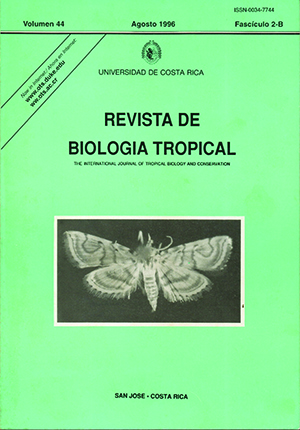Abstract
Composition, intensity, diversity, ontogenetic and seasonal changes of feeding of Prionotus stephanophrys, Bellator gymnostethus and P. albirostris were studied in the Pacific coast of Baja California Sur, Mexico. A total of 547 individuals of the three species were sampled between 1988 and 1990. The euphausiid Nyctiphanes simplex was the main prey of B.gymnostethus, which caught it during the day, and of P. stephanophrys, which ate it at night and twilight; latger individuals of P. stephanophrys shifted to Pleuroncodes planipes, a change that coincided with (he fish' shift from the pelagic to the benthic environment. Feeding intensity of this searobin was higher in summer, after reproduction. P. albirostris fed throughout the day; its diet, more diverse and equitable, was based on penaeids, pasiphaeids, and mysids. Differences in spatial distribution, diet and time of feeding suggested efficient habitat partitioning among these fishes,##plugins.facebook.comentarios##

This work is licensed under a Creative Commons Attribution 4.0 International License.
Copyright (c) 1996 Revista de Biología Tropical
Downloads
Download data is not yet available.


